Sewa Foundation
Sewa Relief And Shelter Program
Pakistan faces some of the highest disaster risk levels in the world, ranked 18 out of 191 countries by the 2020.This risk ranking is driven particularly by the nation’s exposure to earthquakes and the risks of internal conflict. However, Pakistan also has high exposure to flooding (ranked jointly 8th), including, riverine, flash, and coastal, as well as some exposure to tropical cyclones and their associated hazards (ranked jointly 40th) and drought (ranked jointly 43rd). Disaster risk in Pakistan is also driven by its social vulnerability.


SEWA SHELTER & RELIEF PROGRAM aims to:
- Heat Waves Pakistan regularly experiences some of the highest maximum temperatures in the world, with an average monthly maximum of around 27°C and an average June maximum of 36°C.
- Droughts are in some cases associated with El Niño events and can cause significant damage to crop and livelihoods, as in the consecutive droughts of 1999 and 2000.
- Flood The World Resources Institute’s Global Flood Analyzer AQUEDUCT can be used to establish a baseline level of flood exposure. As of 2010, assuming protection for up to a 1 in 25-year event.
- Emergency Food Relief Providing
- winter clothes and blankets to the vulnerable families
- Urgent response to the displaced by providing them shelter and basic necessities.
- Rehabilitation and relief p provide health facilities, food, cloth distribution, blankets and water tanks to people to help them to survive the natural calamity.
- SEWA SHELTER & RELIEF PROGRAM also aims to help abandoned people including senior citizens, children, and women by providing them with shelter and the facility of caregivers.





